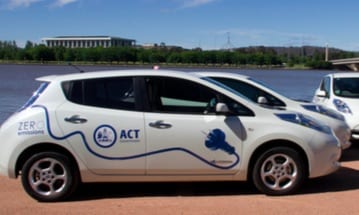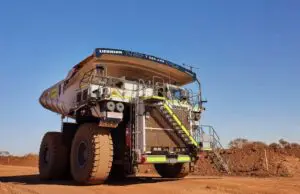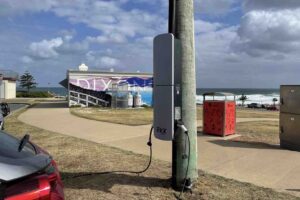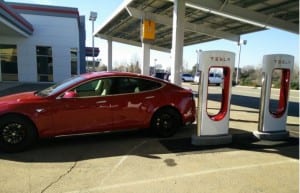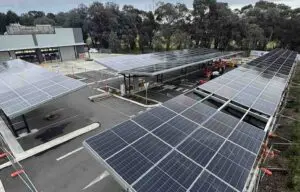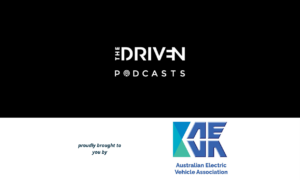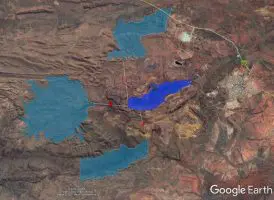The ACT government has doubled up on its commitment to 100 per cent renewable energy by 2020 by announcing the country’s most ambitious transition plan to electric vehicles, including a mandate for all newly leased government vehicles to be zero emissions from 2021.
The commitment came as part of a new transport strategy unveiled by energy minister Shane Rattenbury, timed quite deliberately some four days ahead of the COAG meeting that will decide on the latest proposal for Australia’s future climate and energy policy.
The initiatives include a study of solar-powered charging stations in car parks, vehicle-to-grid studies, use of transit lanes, and salary sacrifice options, as well as parking and building requirements.
The ACT has already contracted with some 650MW of wind and solar farms that will deliver the equivalent of ACT’s annual electricity consumption by 2020. Most of the new facilities are now complete or under construction.
The transport strategy – and the push to zero emissions vehicles – is the next phase, and the plan outlined by Rattenbury represents by far the most ambitious plan of any state or territory government in the country.
Transport will account for 60 per cent of the ACT’s annual emissions once its electricity target is met.
“Zero emissions vehicles offer a clean, reliable and smart option for travel in Canberra,” Rattenbury says. “From 2020 in the ACT, all electricity will be from renewable sources – so using a zero emissions vehicle charged in the ACT will result in no greenhouse gas emissions.”
Australia, disappointingly, trails the western world in vehicle emission standards, and tentative proposals to tighten the legislation have been met with fear campaigns and accusations that they would be some sort of carbon tax.
But the ACT says the EVs are expected to be taken up rapidly around the world, noting the commitments by numerous major car manufacturers to transform their fleets, and by governments such as Norway, Netherlands, the UK and France to ban petrol and diesel vehicles from dates ranging from 2025 to 2040.
The ACT has already introduced discounted registration and stamp duty costs for EVs, but the new initiative takes this much further – for both electric cars and electric bikes, which it sees as a major new attraction for consumers.
The initiatives include:
- At least 50 per cent of all newly leased ACT Government fleet passenger vehicles will be zero emissions vehicles in 2019–20 (where fit for purpose).
- All newly leased ACT Government passenger fleet vehicles will be zero emissions vehicles from 2020–21 (where fit for purpose).
- Amend the Parking and Vehicle Access General Code to require all new multi-unit and mixed-use developments to install vehicle charging infrastructure.
- Work with local and state governments to facilitate the installation of charging stations on major routes to and from Canberra including routes to Sydney and coastal areas.
- Permit zero emissions vehicles to drive in transit lanes until 2023.
- Conduct a feasibility assessment for the installation of covered car parks with solar-powered vehicle charging stations.
- Investigate providing incentives to encourage the use of electric bikes including through more secure bike parking and bike charging stations.
- Amend tax arrangements to allow ACT Government staff to salary sacrifice an electric bike.
- Support new and innovative businesses in the zero emissions vehicles sector to maximise job creation and economic development in the ACT.
- Investigate the potential use of electric vehicle batteries to support the electricity grid at times of peak demand.
- Review parking and traffic regulations to ensure that priorities offered to zero emission vehicles can be enforced; and provide specific zero emissions vehicle number plates for easy identification and enforcement of zero emissions vehicles related regulations (e.g. ensuring only zero emissions vehicles park and charge in allocated spaces for vehicle charging).
The Electric Vehicle Council said the government purchasing mandate sets a benchmark for other governments and will send a strong signal to the market to bring more models into the country.
So far the ACT government car fleet has just 17 battery electric vehicles, and 7 plug-in hybrids, along with eight electric bicycles, and has begun trials of two battery electric buses and one hybrid bus running on diesel, and proposes 20 hydrogen powered fuel cell vehicles over the next two years.
The trial began in August 2017 and will run until late 2018, with the trial buses servicing a number of routes throughout Canberra. The results of this trial will provide information on issues to consider in making the transition to a zero emissions bus fleet.
The ACT says there are currently more than 200 battery electric and plug-in hybrid cars registered in the territory. Australia has around 4,000 such vehicles, a take-up that is being held back by the lack of new EV models available in Australia.
The uptake of electric vehicles in the ACT is not only required to deliver on the territory’s emission reduction targets, but it will also reduce the cost of transportation for residents,” said council president Behyad Jafari.
“The uptake of electric vehicles also presents great opportunities for the development of new businesses and jobs in Australia.”

